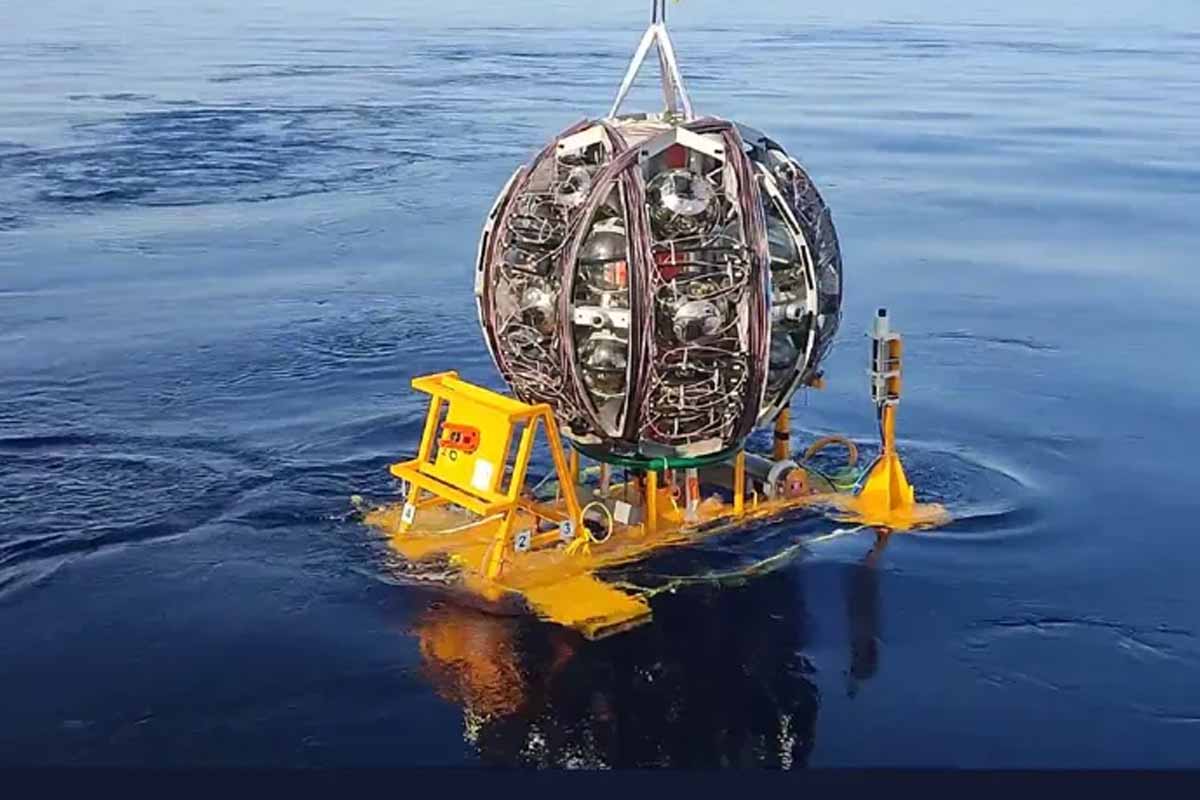A streak of invisible energy crossed intergalactic space, slipped through rock and water, then left a faint flash that changed what we expect from deep-ocean astronomy. Buried detectors in the Mediterranean Sea caught it during routine monitoring. The signal points to a neutrino so energetic that it forces new questions about where such particles are born, how they travel, and why sea water, not mountain ice, delivered this breakthrough.
Why the Mediterranean Sea became a natural neutrino observatory
Neutrinos rarely touch matter, yet billions pass through our skin each second. To notice the few that do interact, scientists built KM3NeT: vertical strings of light sensors moored 2,450 meters down off Sicily, with a companion array near Toulon. When a neutrino hits nearby matter, the by-products sprint through water and leave a flash.
Deep, clear seawater helps in two ways. It lets those light signals travel farther, and it blocks much of the noisy particle rain from above. The site’s darkness, stable temperatures, and steady currents improve uptime and calibration. Together, these features turn a hostile abyss into a quiet camera for the fastest messengers we know.
The infrastructure also scales. Engineers add new lines without hauling the whole detector up. As modules join the grid, sensitivity grows and timing gets sharper. That modular build, tested during storms and long cable runs, proved crucial when an unexpected, almost sideways track lit up the instruments and demanded rapid validation.
How KM3NeT caught a particle that crossed the universe
The event arrived in February 2023 while the telescope was still in construction, with only about a tenth of its planned sensors live. Even so, the track looked clean. Its trajectory skimmed almost horizontally toward Greece, which reduced the chance it was a muon created by cosmic rays in the atmosphere. The geometry and timing fit a neutrino.
Teams worked through systematics. They checked clocks, cable delays, sensor health, and background models. The reconstruction held up. Later analysis, published on February 12, 2025 in Nature, estimated an energy near 120 petaelectronvolts—roughly twenty times the previous record. From the Mediterranean Sea, that single track spoke of engines far beyond our galaxy.
This level matters because higher energy makes pointing easier. The muon track acts like an arrow, and water’s optics help define it. With more events, maps of the high-energy sky will gain structure. We will see clusters and voids, then cross-match them with radio jets, X-ray flares, and gravitational-wave triggers to narrow the list of culprits.
What the signal says about extreme cosmic engines
Candidates include supermassive black holes feeding at high rates, active galactic nuclei with jets aimed our way, gamma-ray bursts, and shock fronts from certain supernovae. Each can accelerate hadrons that later create neutrinos. Because neutrinos ignore magnetic fields, they can keep the source’s direction. That is the clean “line” photon astronomy often loses in dusty, crowded regions.
Context helps. IceCube at the South Pole proved cosmic neutrinos in 2012 and continues to catch many lower-energy events. Now, detectors in very different environments compare notes. When arrays under Antarctic ice and the Mediterranean Sea see activity from the same patch of sky, confidence grows.
Researchers also stress humility. One event does not rewrite theory alone. It sets a bar and shows that sources can reach energies once considered unlikely. It suggests that known accelerators operate with more efficient particle channels, or that rare transients briefly push to extremes. Either way, models of shock acceleration and jet composition face sharper tests.
Numbers, timelines, and a fast-growing underwater grid
After the 2023 detection, KM3NeT expanded from 21 to 33 detection lines, boosting volume and angular precision. More lines mean more coincidences and better rejection of noise. Timing sync across long cables remains critical; engineers continuously refine calibration with lasers and LEDs to keep nanosecond accuracy and reduce reconstruction blur.
The publication timeline matters too. Internal checks led the collaboration from raw event to vetted result, then to the peer-reviewed Nature paper in early 2025. That pace signals care, not complacency. As the grid grows, the team expects the event rate for ultra-high-energy tracks to rise. Patience plus scale often unlocks rare physics.
Advantages of saltwater persist. Scattering lengths, absorption profiles, and bioluminescence vary by site, yet the team characterizes them in situ. Seasonal changes are tracked. With those inputs, reconstructions stay robust. That is how an event arcing toward Greece could be trusted as cosmic, not atmospheric, and why confidence in follow-ups will keep improving.
From seawater to sky maps: next steps and why they matter
The roadmap is clear: expand the array, tighten pointing, and link alerts with telescopes and gravitational-wave observatories. When a strong track appears, partners can slew within minutes. Rapid follow-up might catch the jet switch on, or the afterglow fade. Coordinated timing can expose the engine’s structure rather than just its footprint.
Data policy evolves with scale. Public alerts encourage independent checks, fresh models, and creative cross-matches. Archival searches can uncover fainter siblings of the big event. As methods improve, earlier runs may reveal missed candidates. From the Mediterranean Sea, each detection adds a puzzle piece to a sky where photons, particles, and ripples all speak.
There is also technology spillover. Building reliable systems at great depth sharpens marine engineering, sensing, and long-baseline timing. The science stays the goal, yet the tools enrich oceanography and seafloor observatories along Europe’s coasts and beyond.
Looking ahead with humility, precision, and open eyes
One blindingly energetic neutrino cannot reveal every secret, yet it resets the scale and renews curiosity. With more lines in place and tighter coordination across instruments, the next seasons may turn a singular flash into a pattern we can read. From water to stars, the Mediterranean Sea now plays a steady role in that unfolding story.
